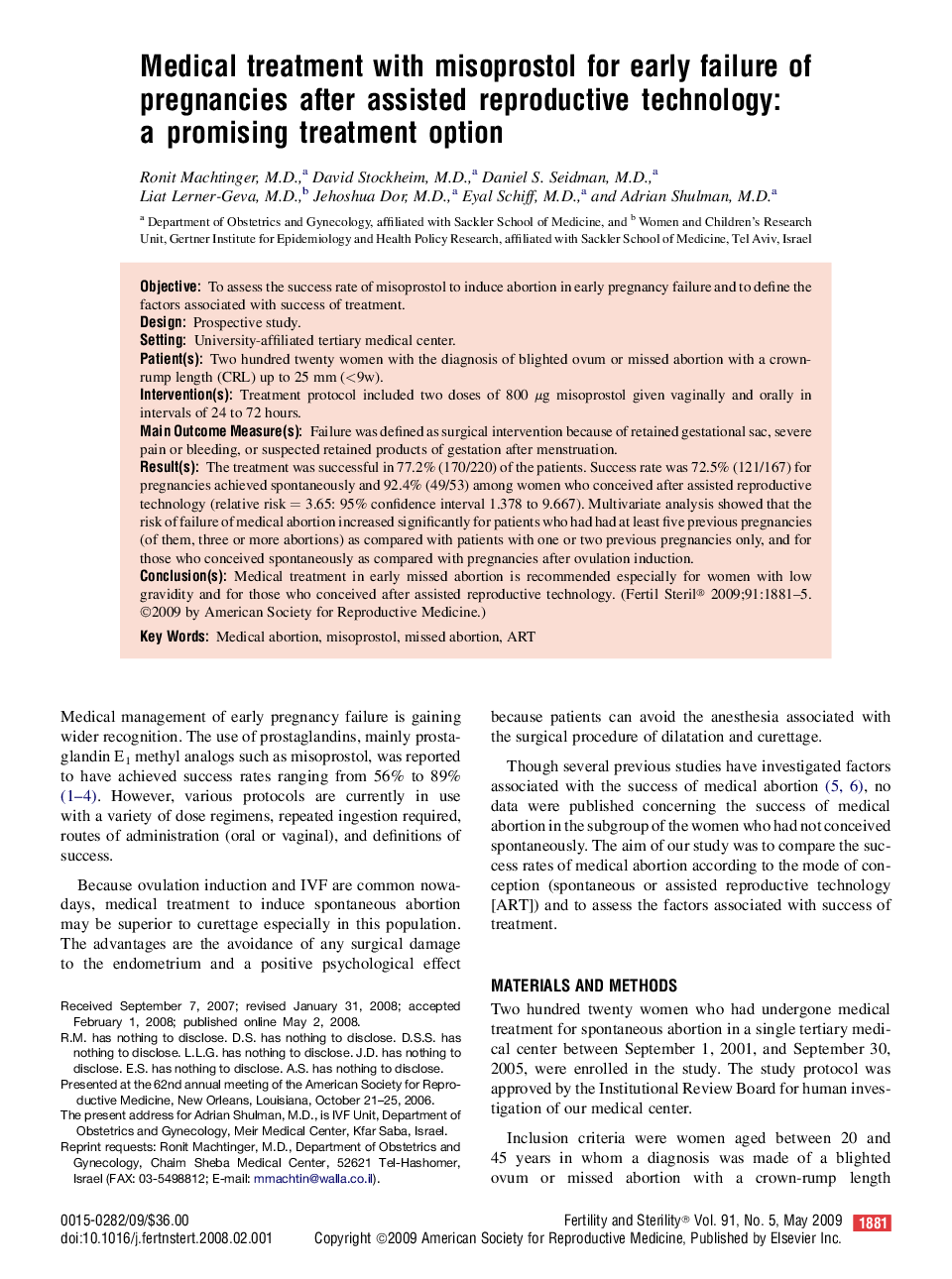| Article ID | Journal | Published Year | Pages | File Type |
|---|---|---|---|---|
| 3938689 | Fertility and Sterility | 2009 | 5 Pages |
ObjectiveTo assess the success rate of misoprostol to induce abortion in early pregnancy failure and to define the factors associated with success of treatment.DesignProspective study.SettingUniversity-affiliated tertiary medical center.Patient(s)Two hundred twenty women with the diagnosis of blighted ovum or missed abortion with a crown-rump length (CRL) up to 25 mm (<9w).Intervention(s)Treatment protocol included two doses of 800 μg misoprostol given vaginally and orally in intervals of 24 to 72 hours.Main Outcome Measure(s)Failure was defined as surgical intervention because of retained gestational sac, severe pain or bleeding, or suspected retained products of gestation after menstruation.Result(s)The treatment was successful in 77.2% (170/220) of the patients. Success rate was 72.5% (121/167) for pregnancies achieved spontaneously and 92.4% (49/53) among women who conceived after assisted reproductive technology (relative risk = 3.65: 95% confidence interval 1.378 to 9.667). Multivariate analysis showed that the risk of failure of medical abortion increased significantly for patients who had had at least five previous pregnancies (of them, three or more abortions) as compared with patients with one or two previous pregnancies only, and for those who conceived spontaneously as compared with pregnancies after ovulation induction.Conclusion(s)Medical treatment in early missed abortion is recommended especially for women with low gravidity and for those who conceived after assisted reproductive technology.
